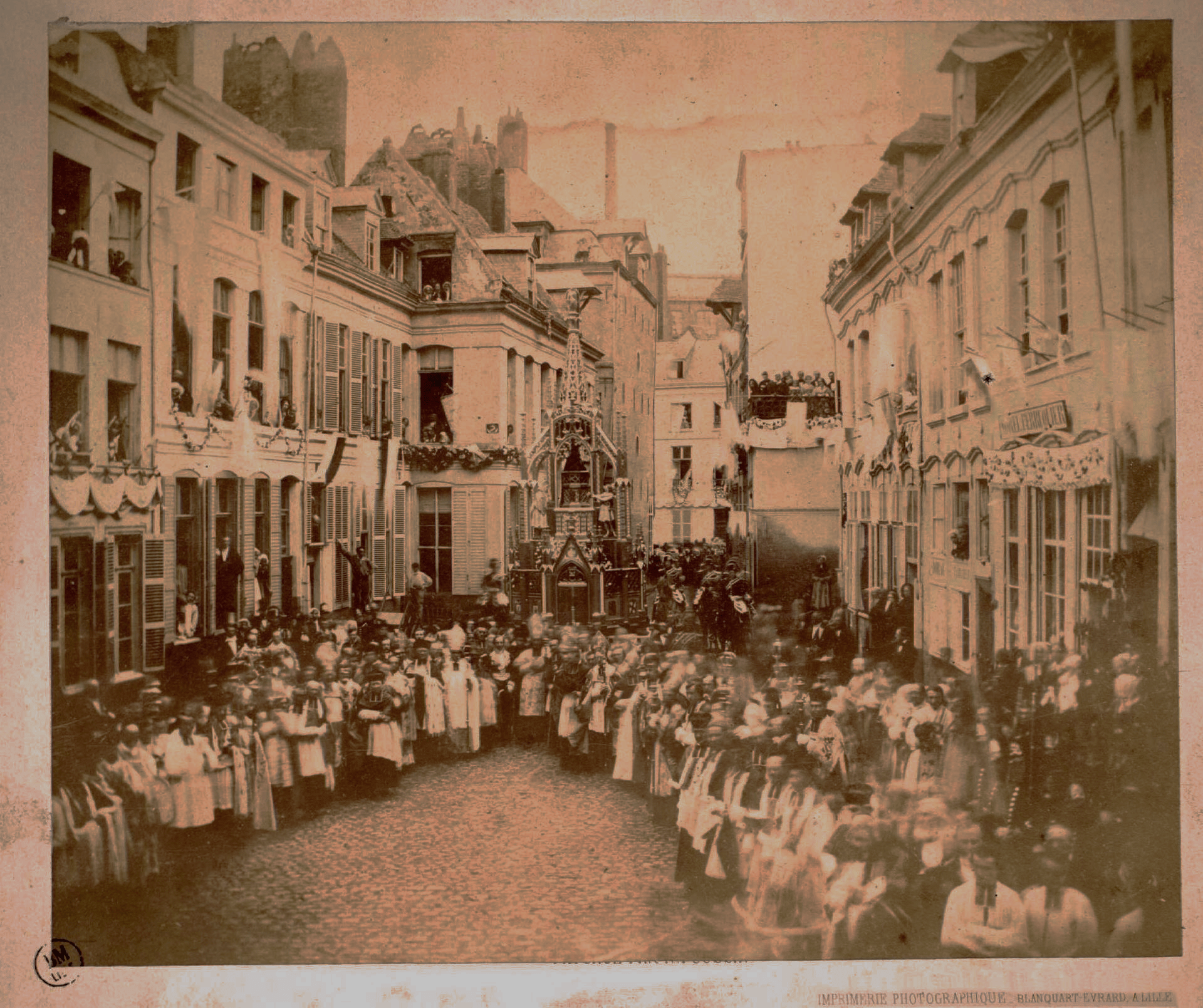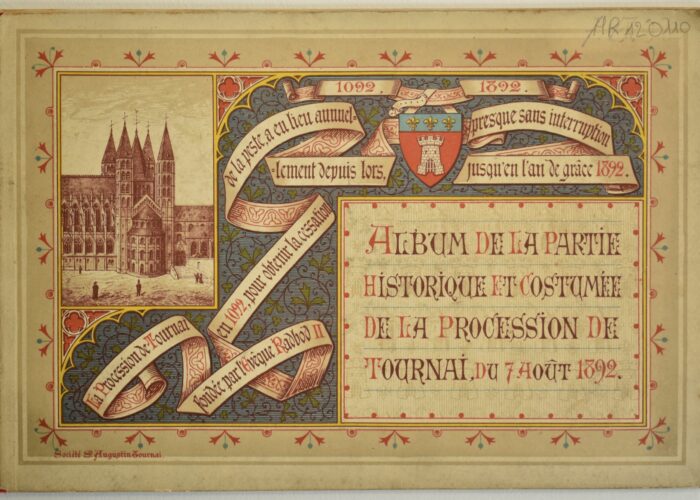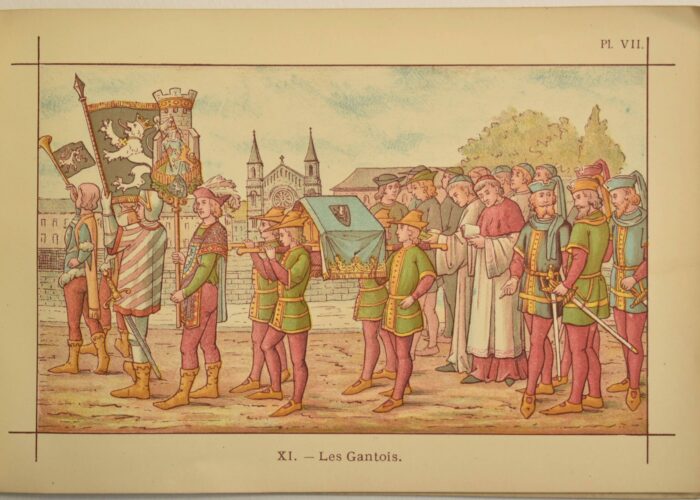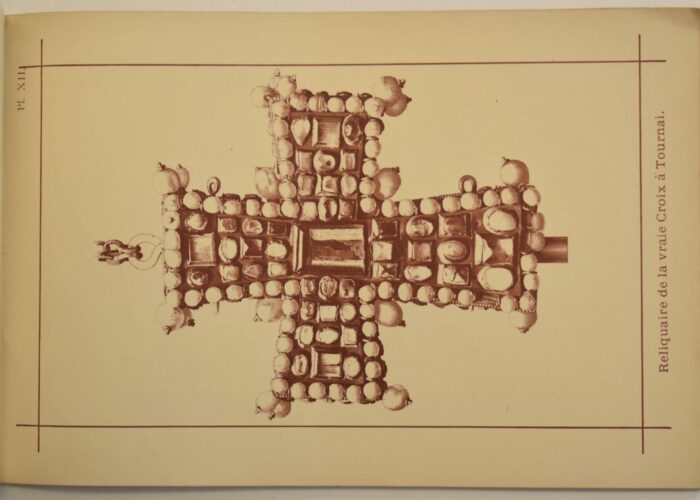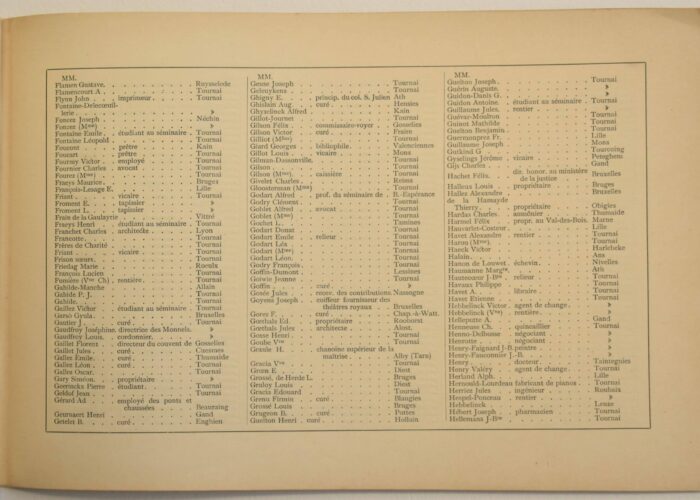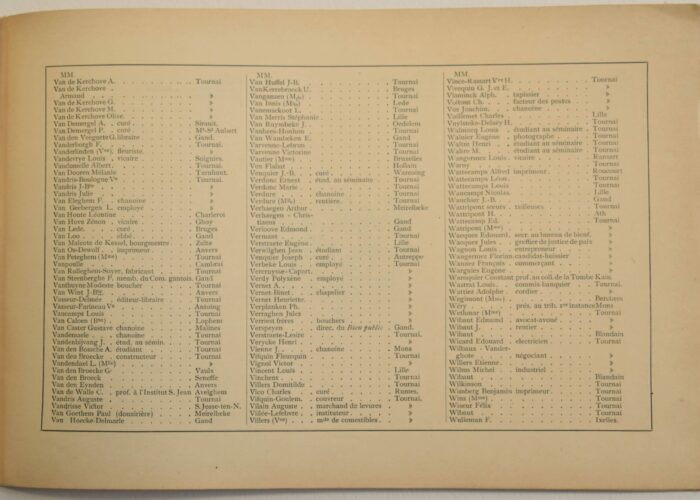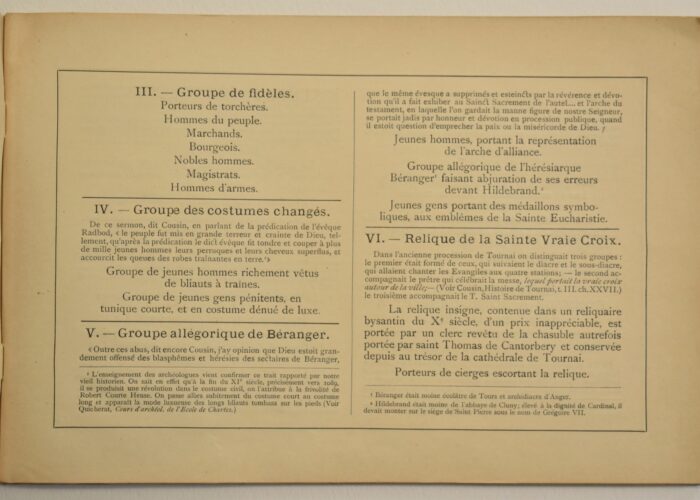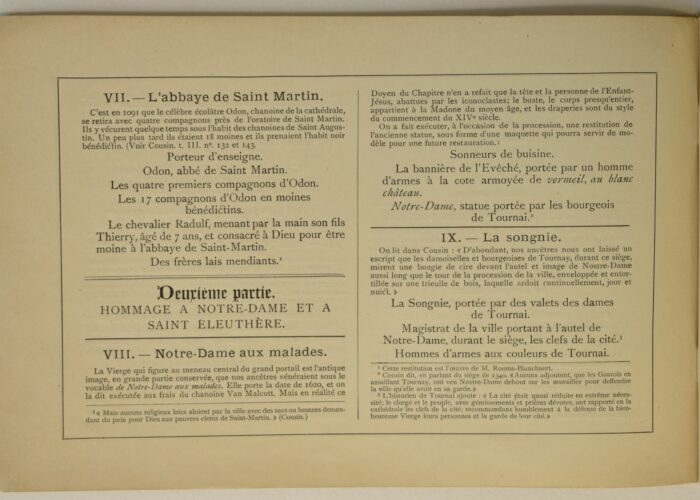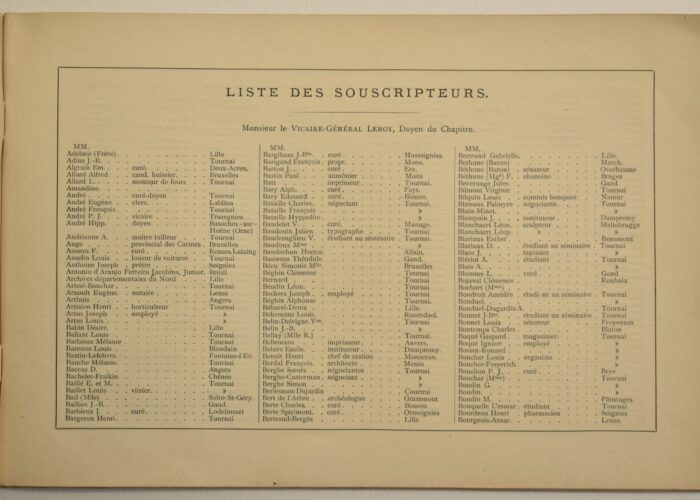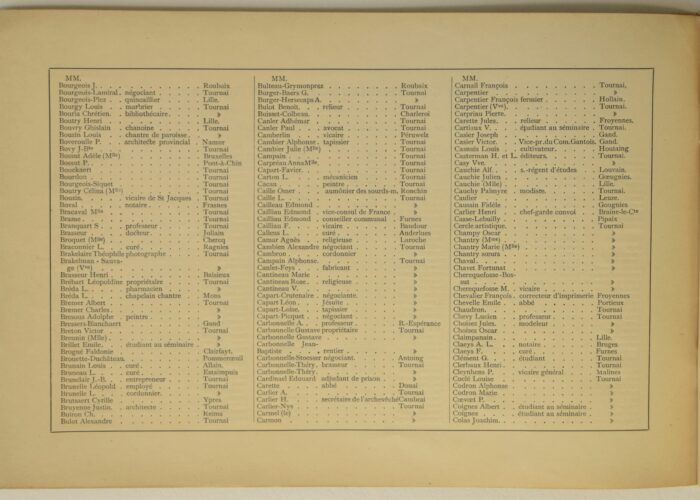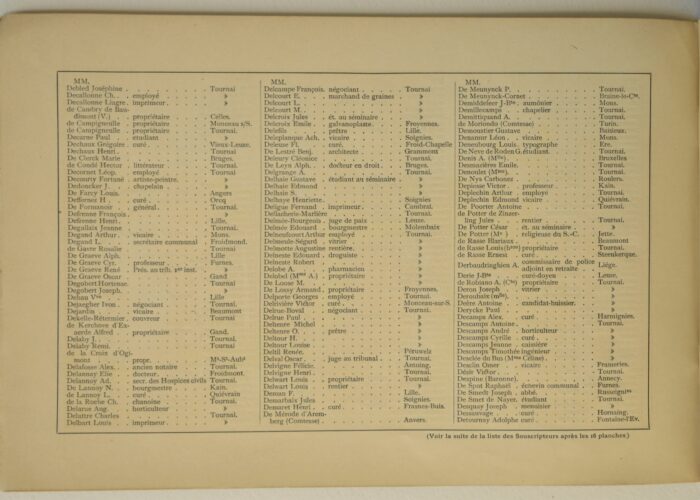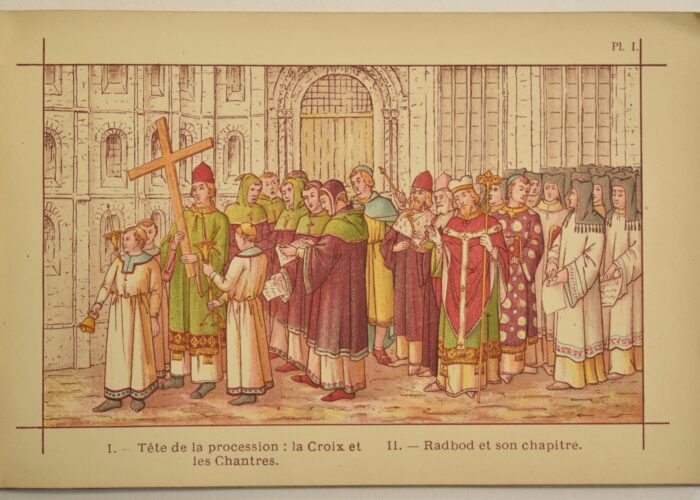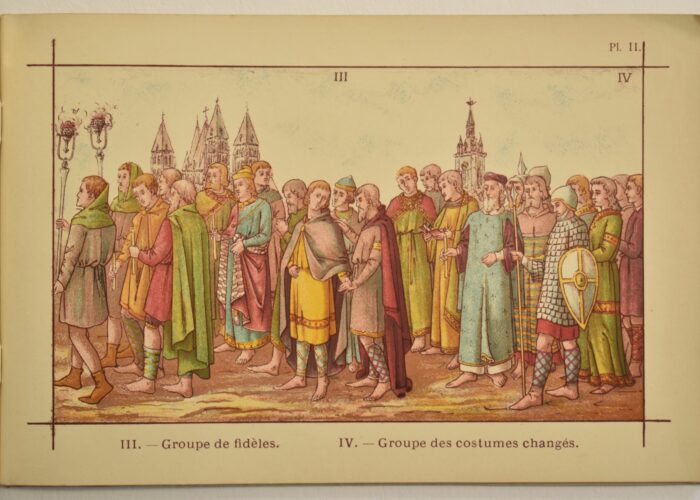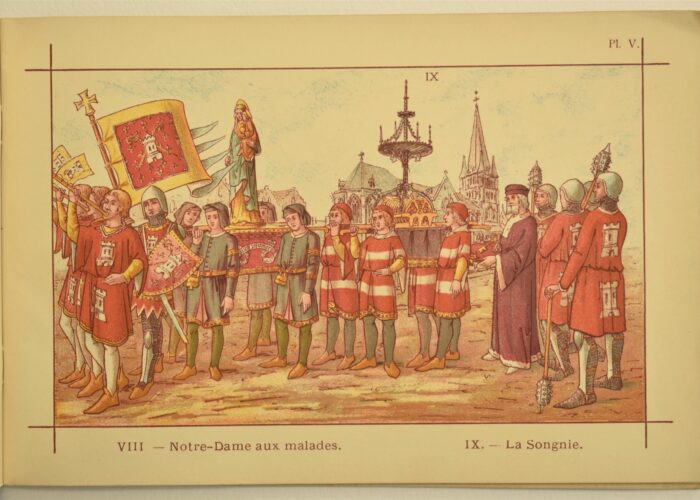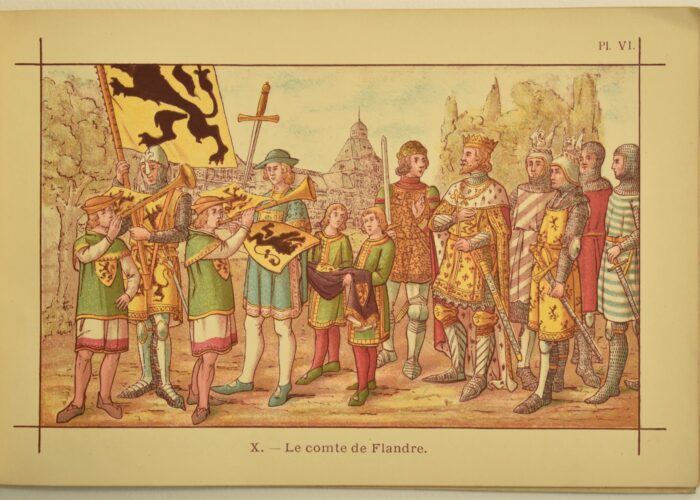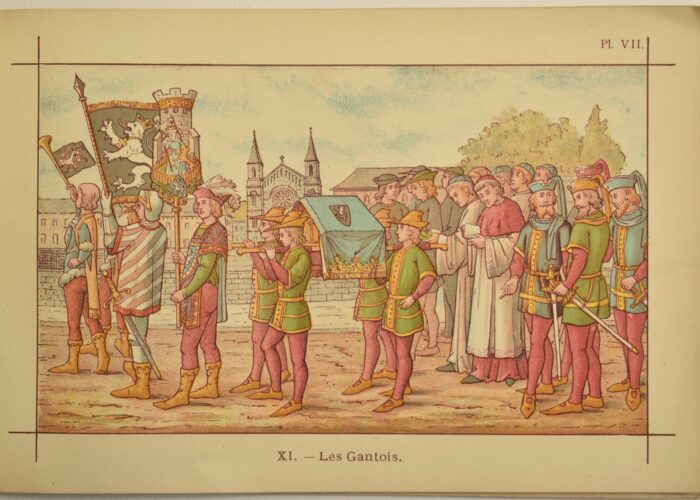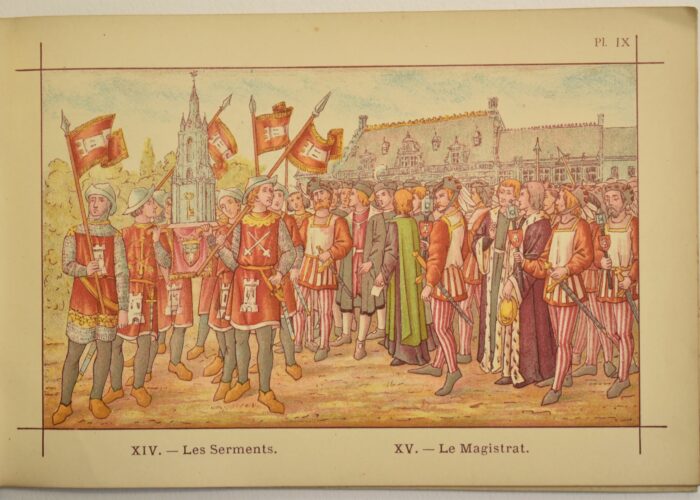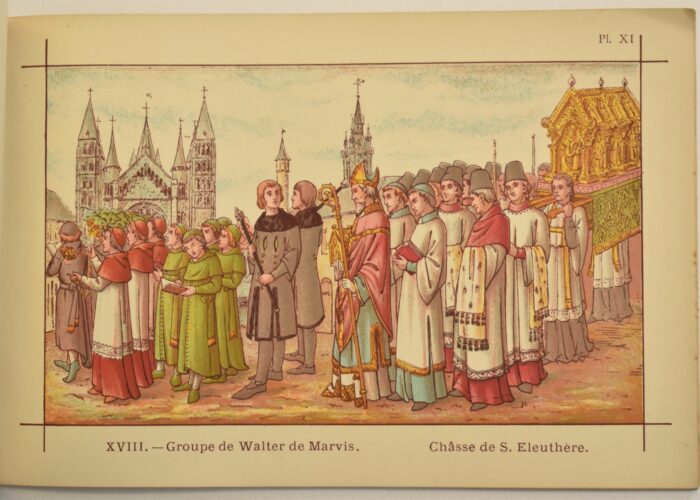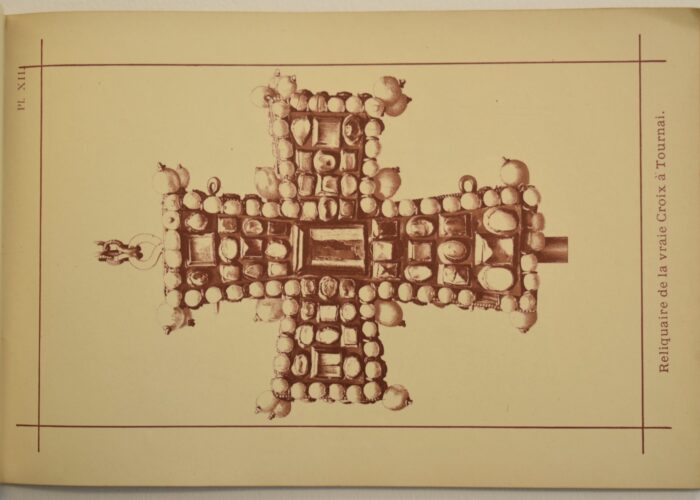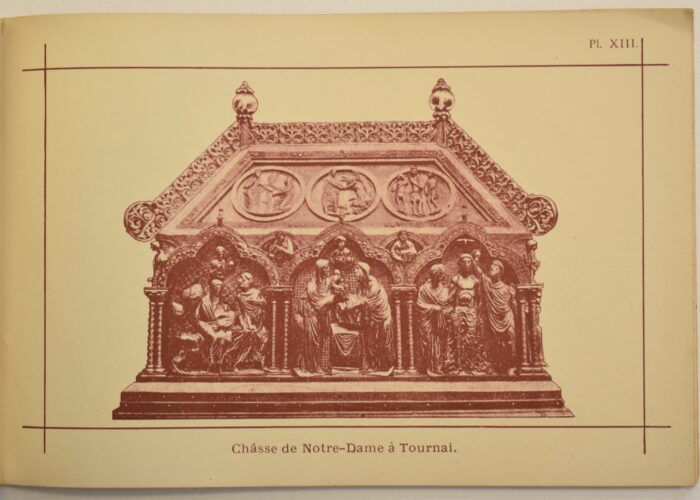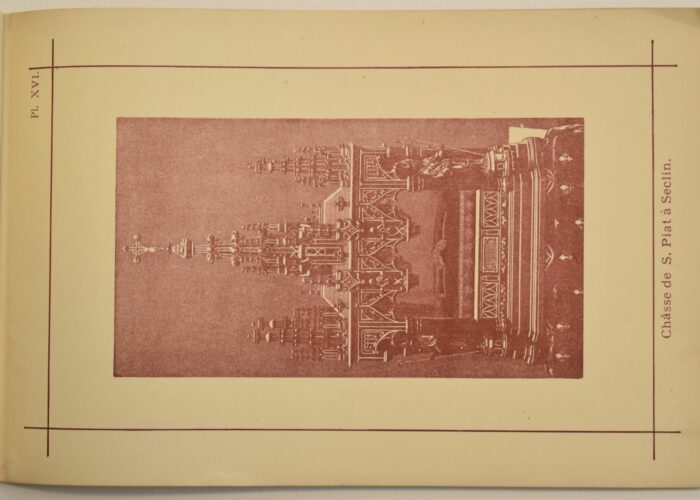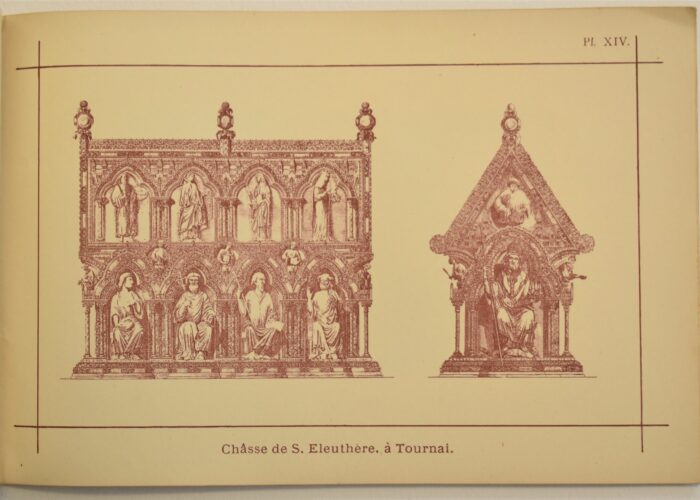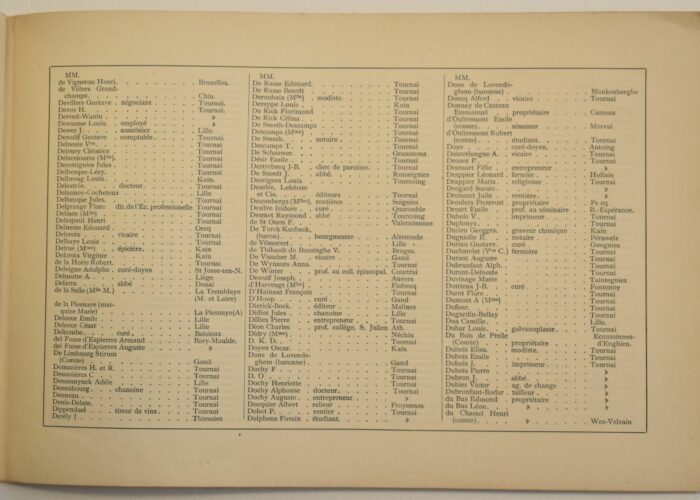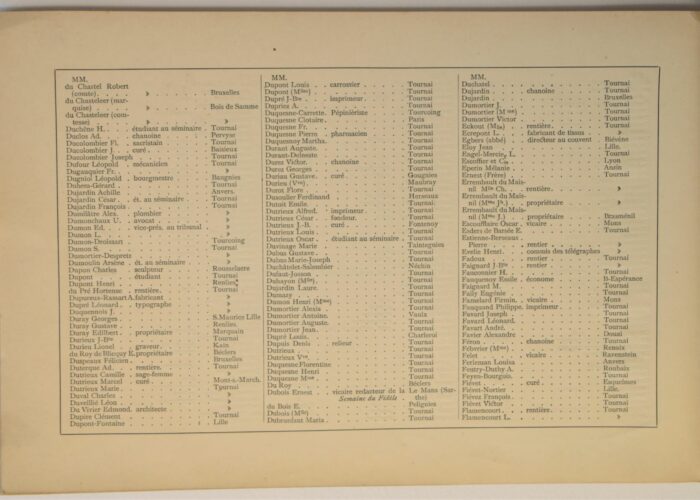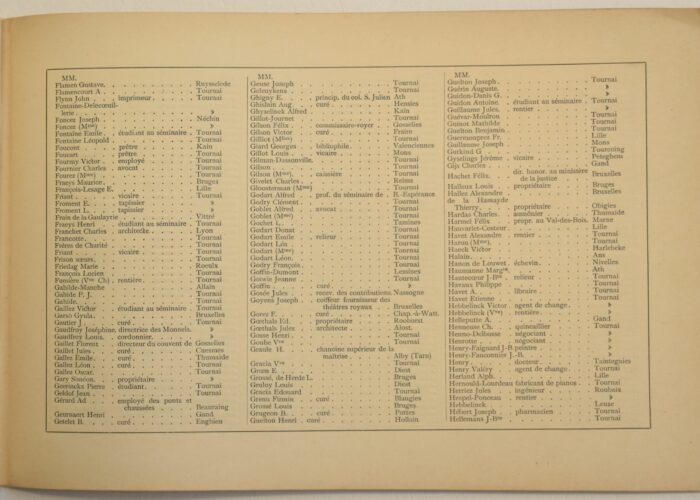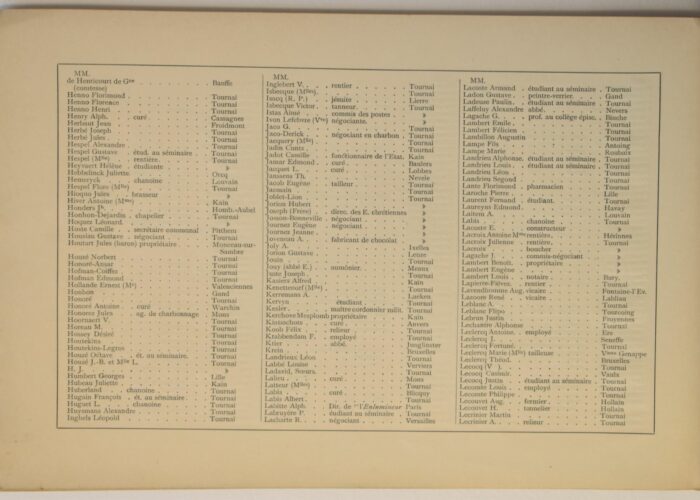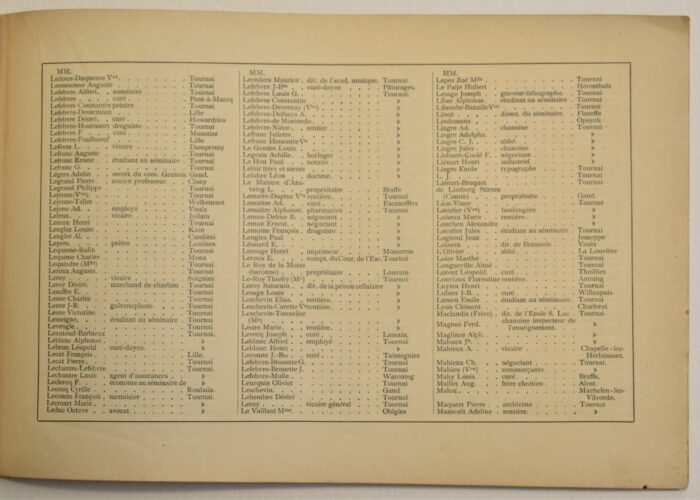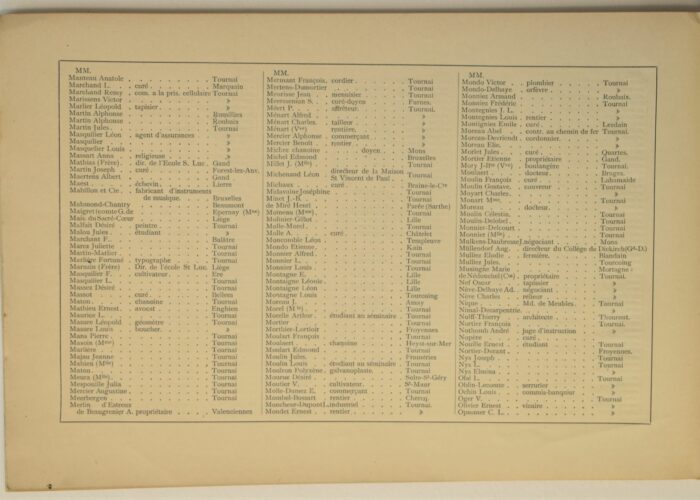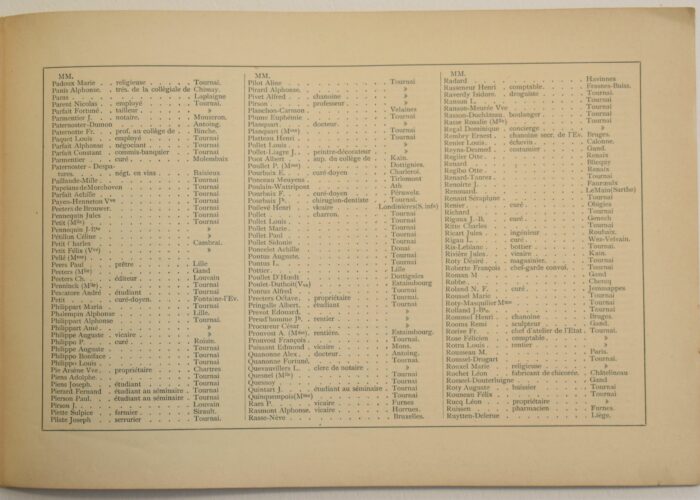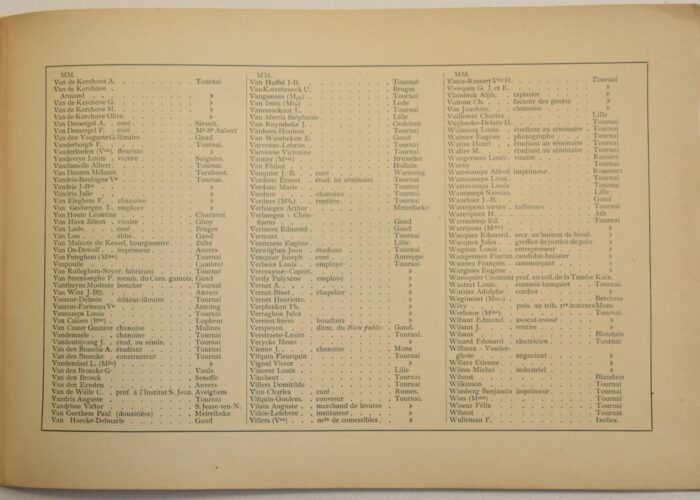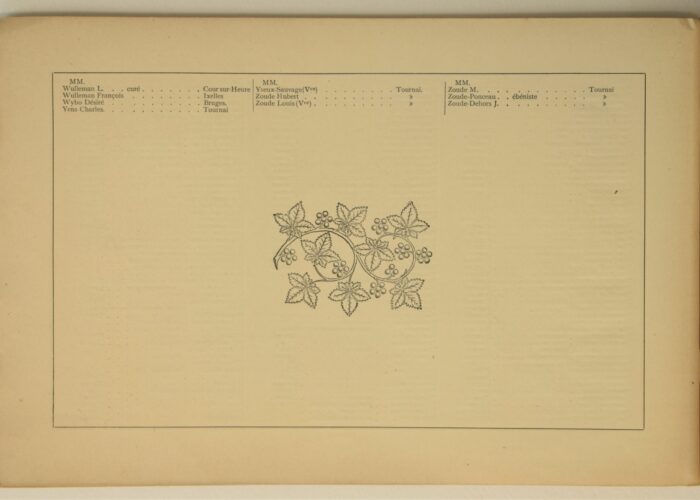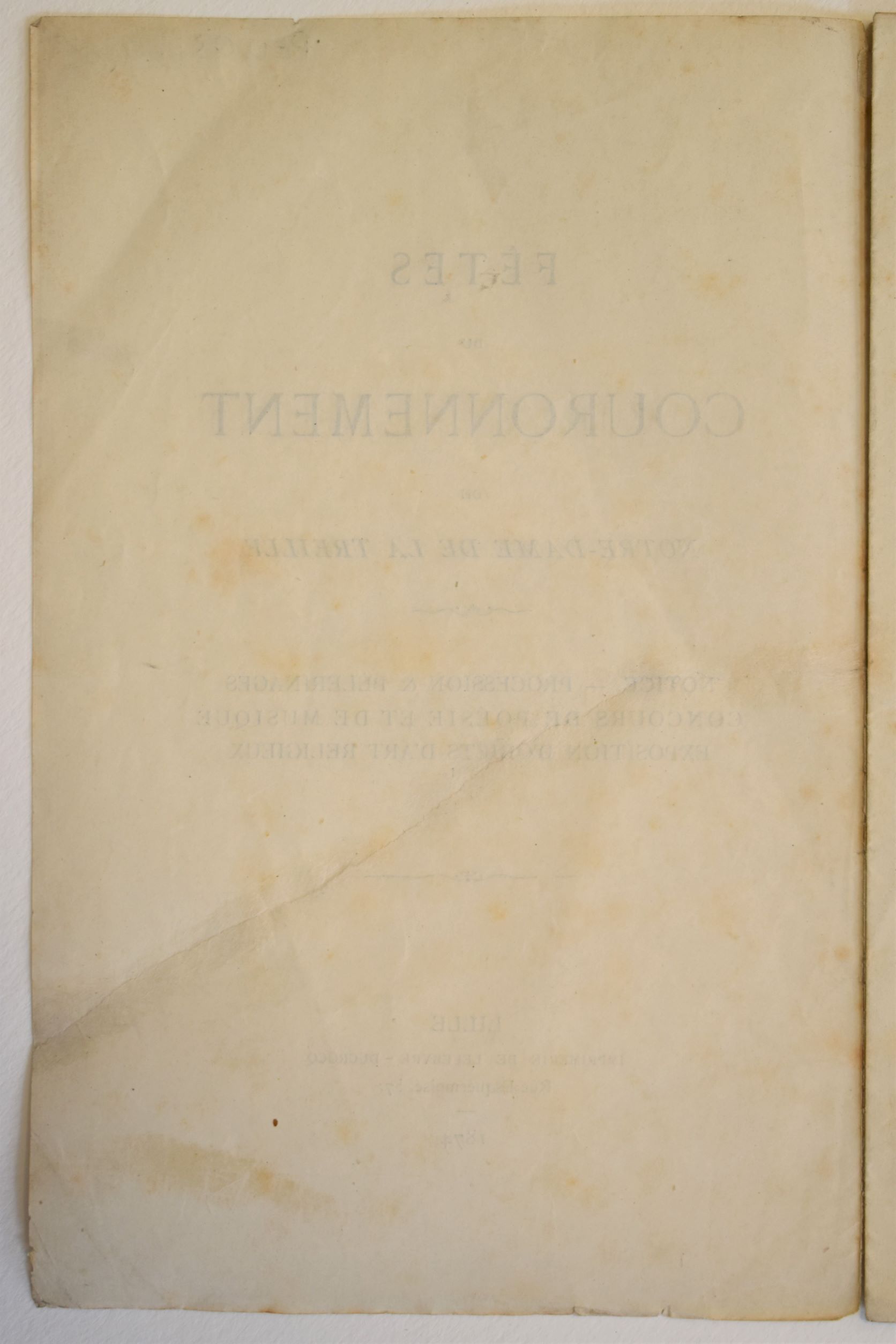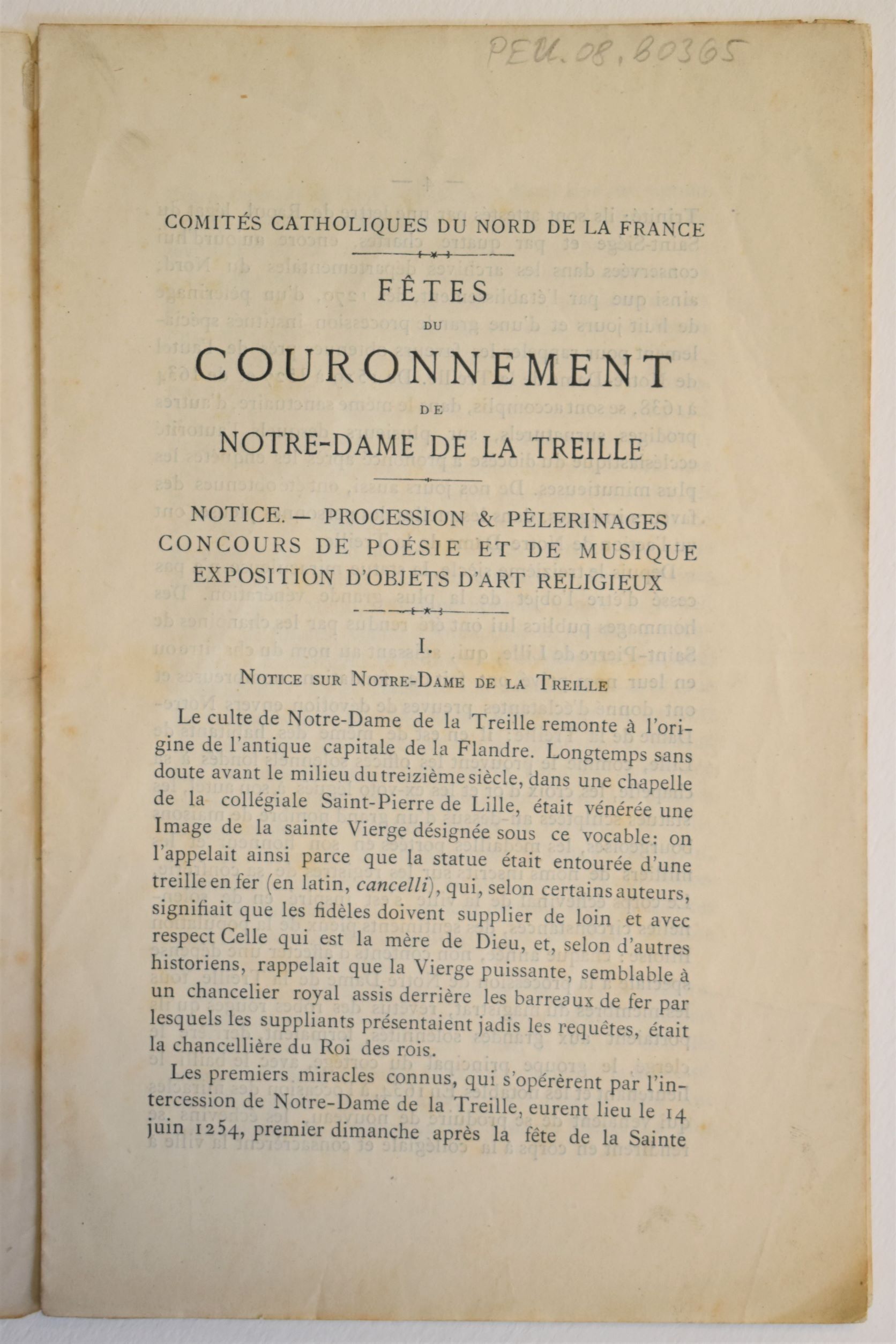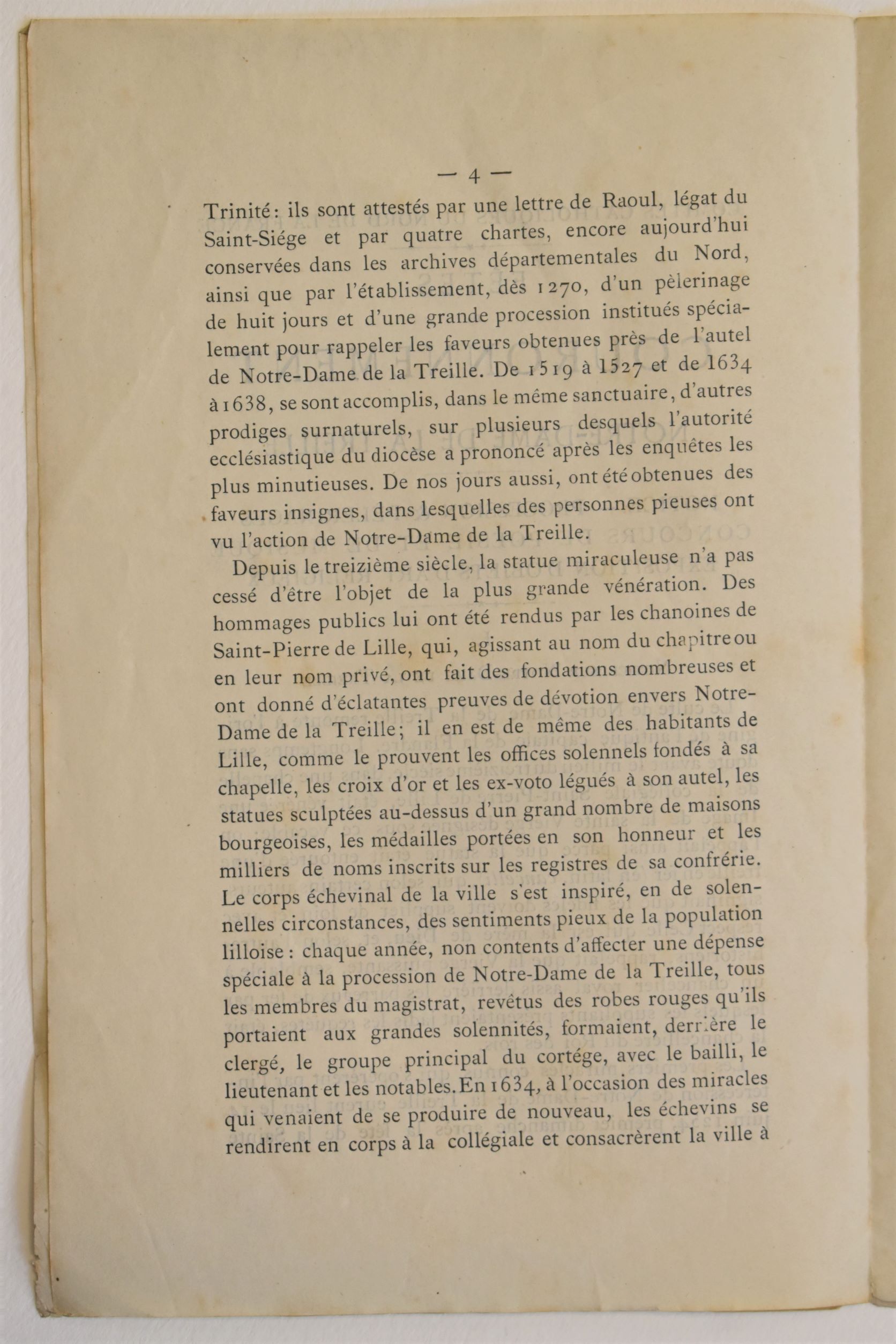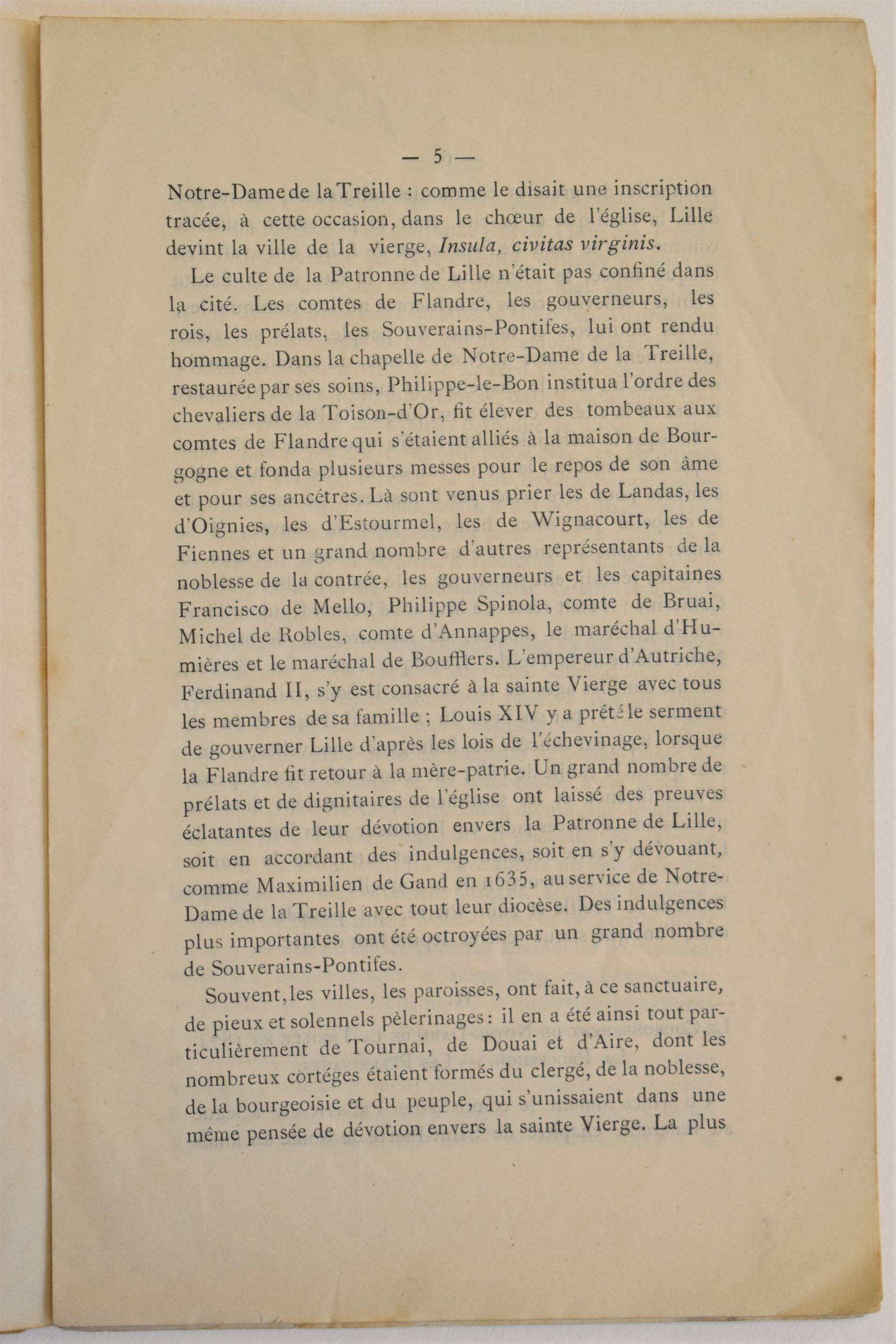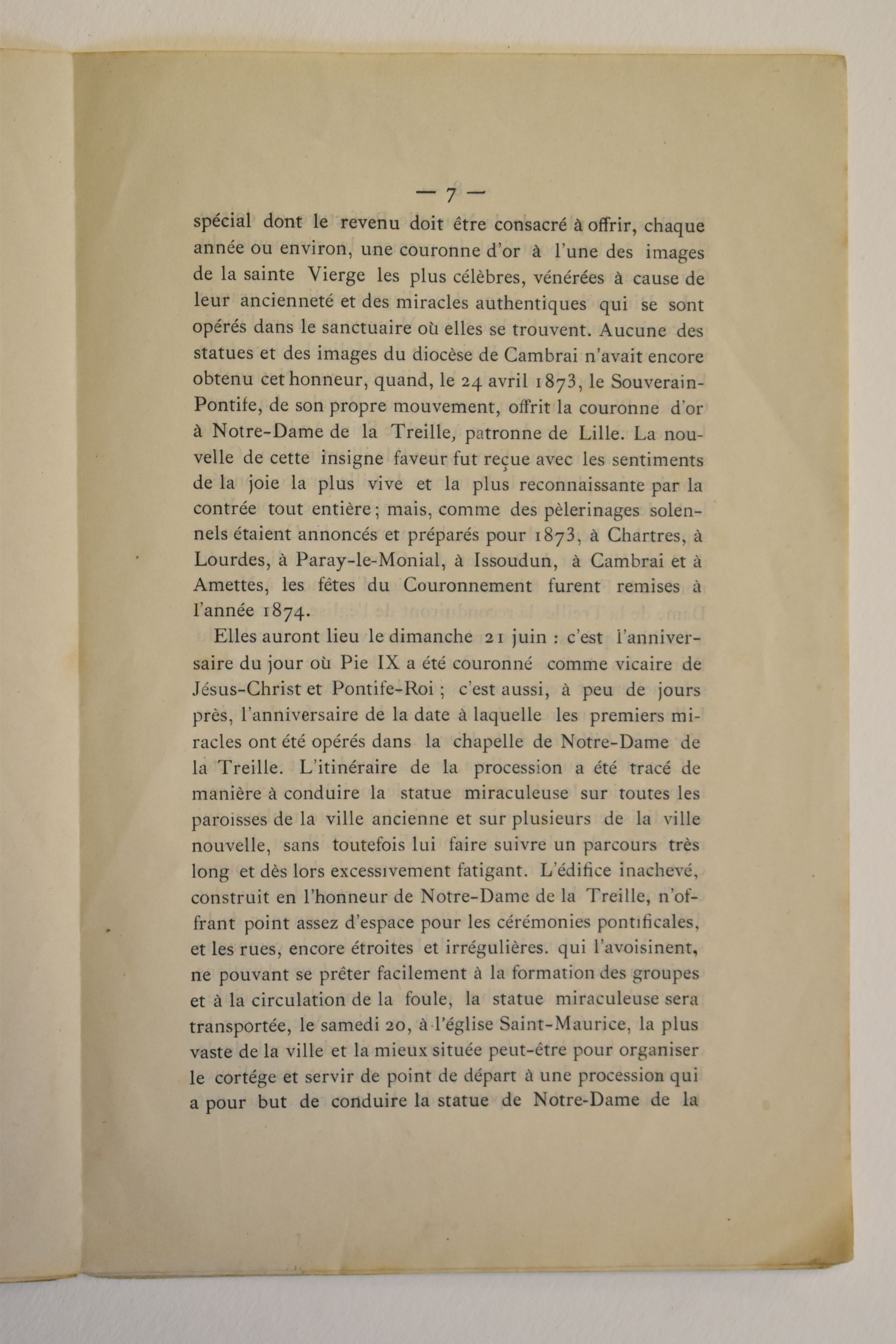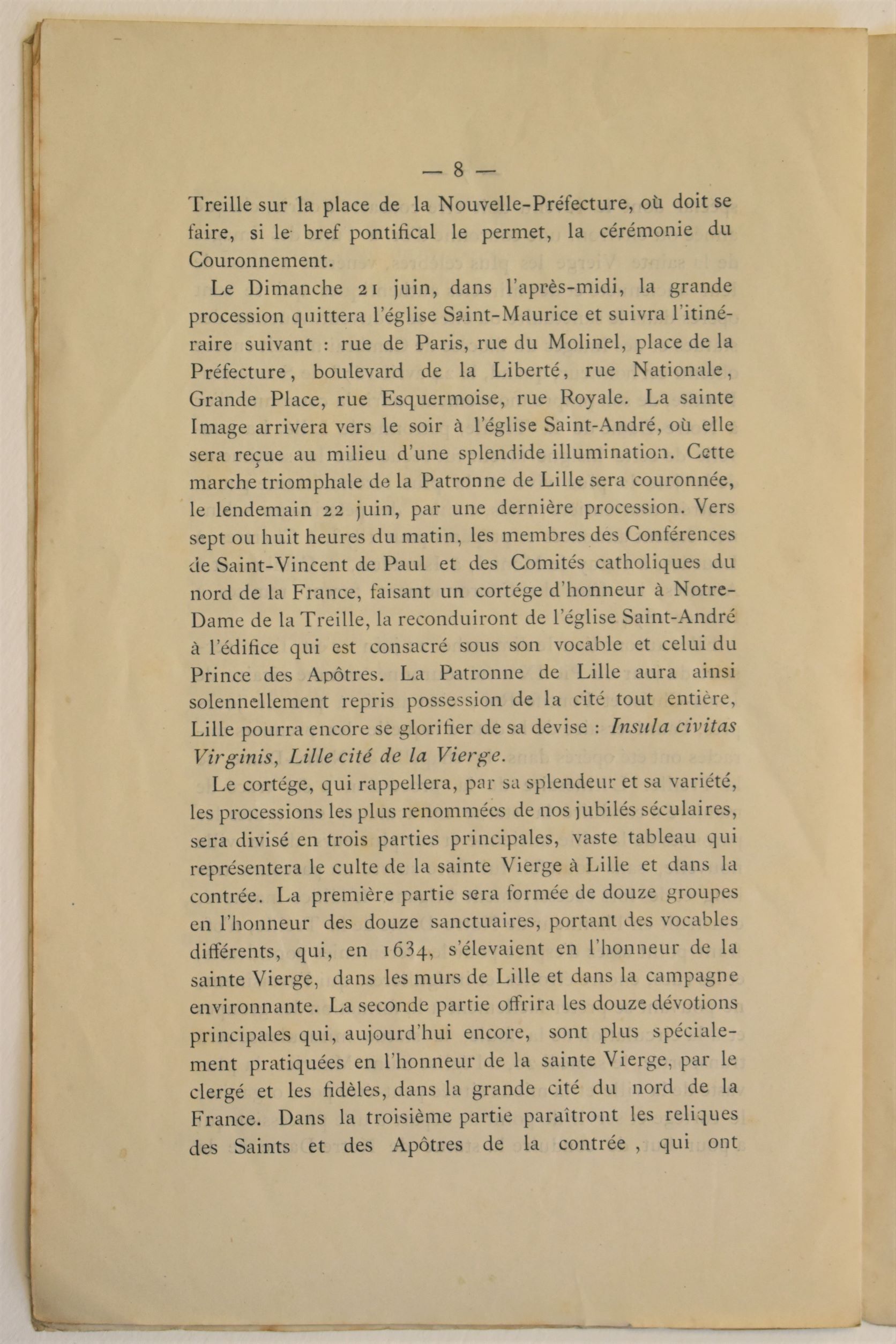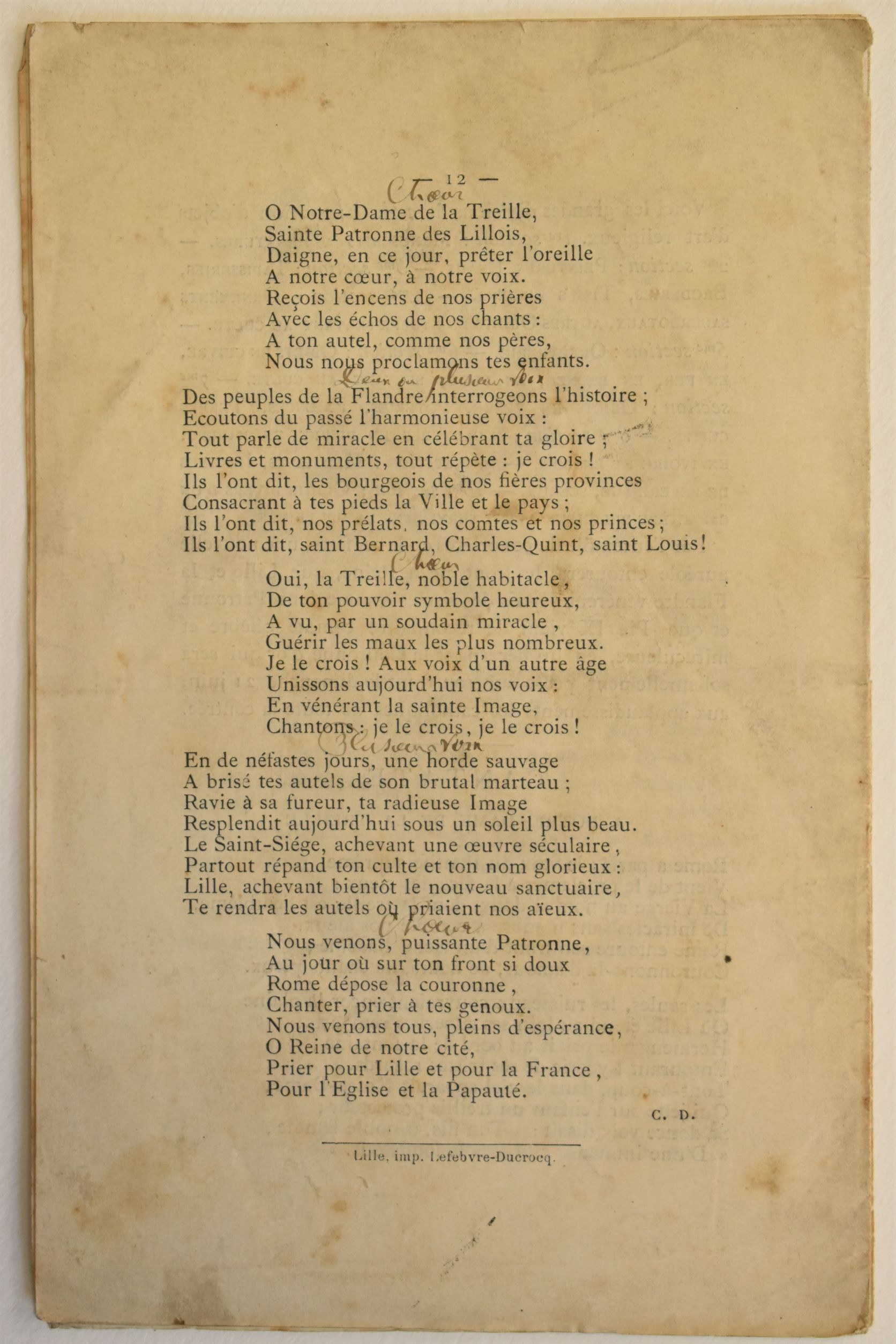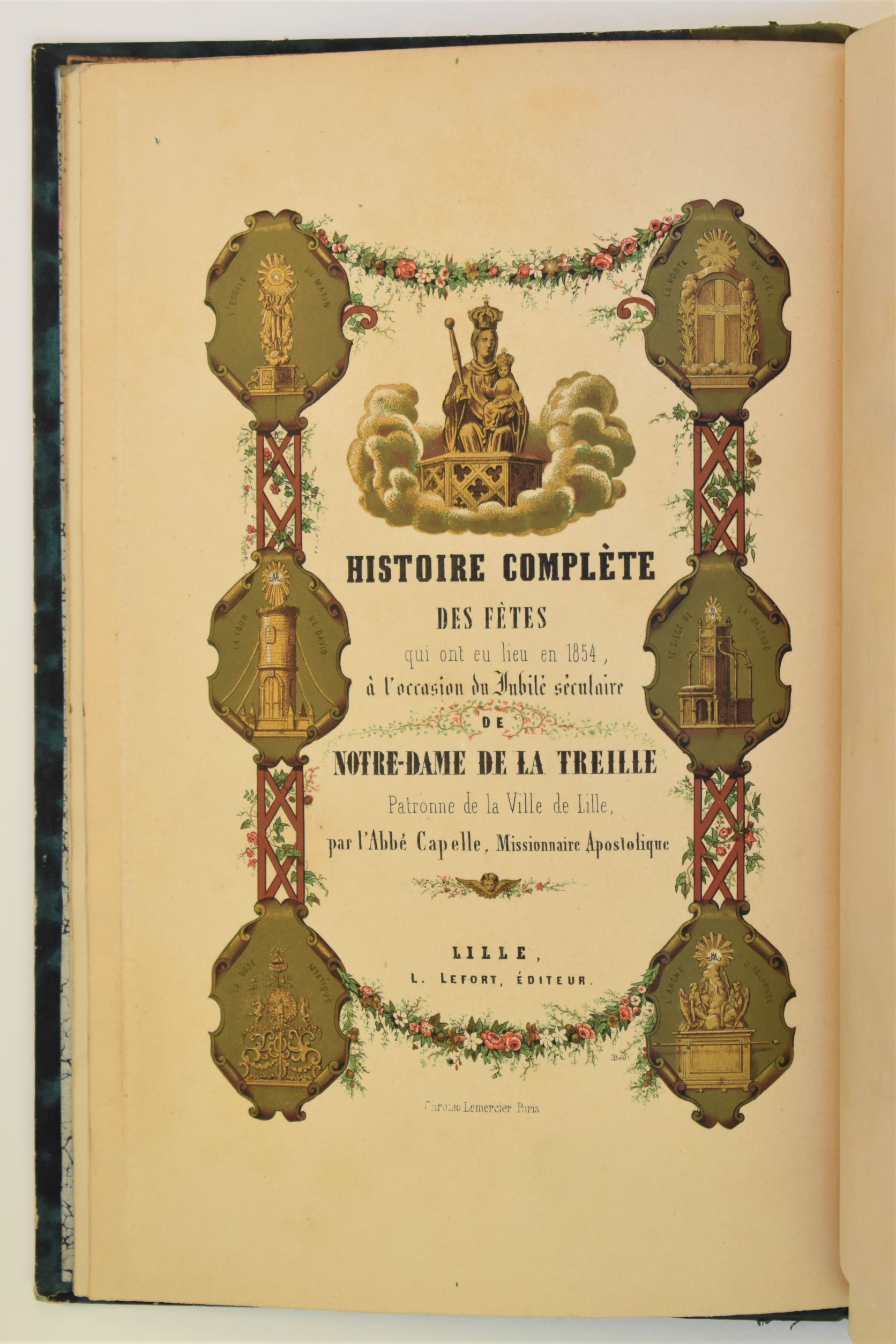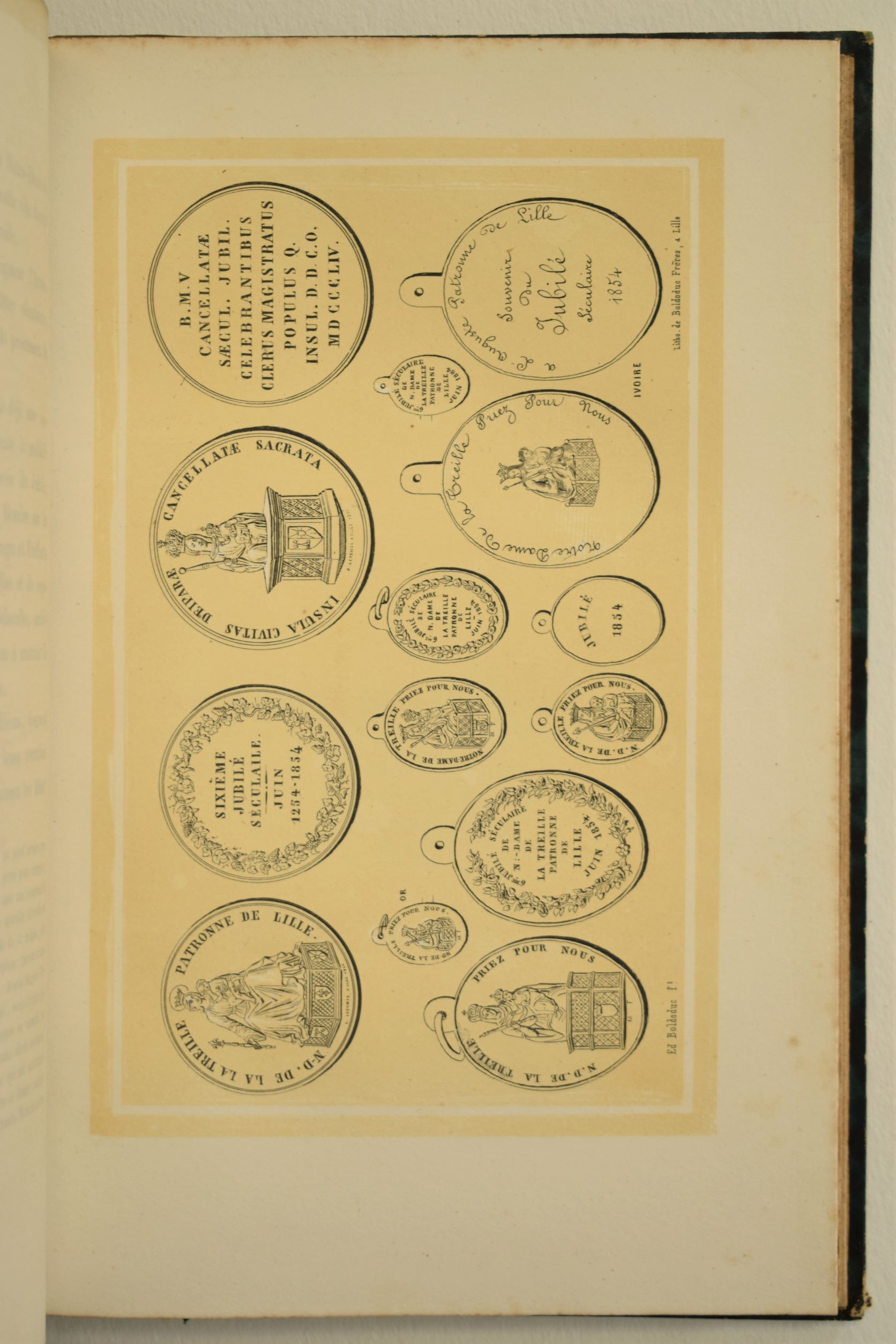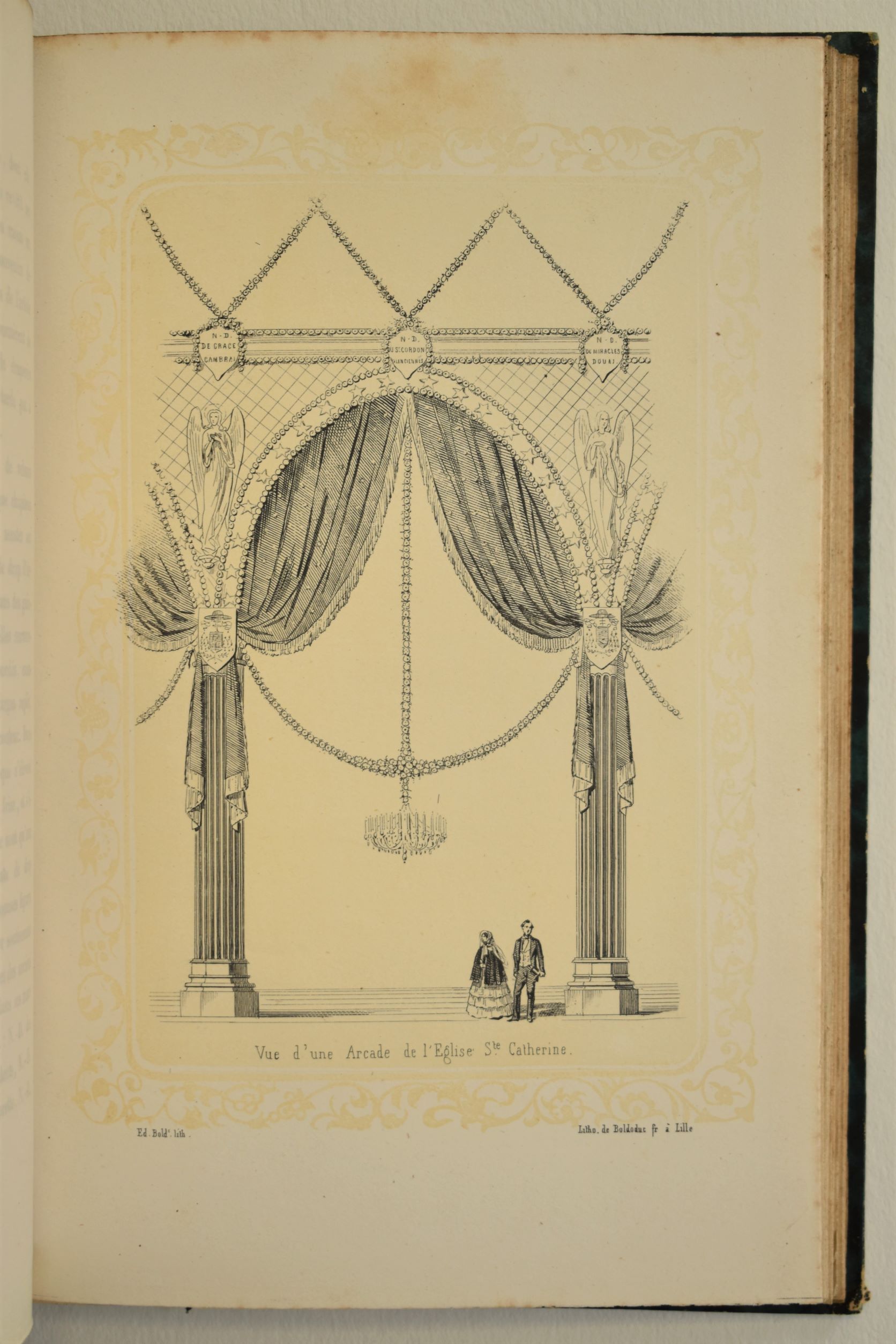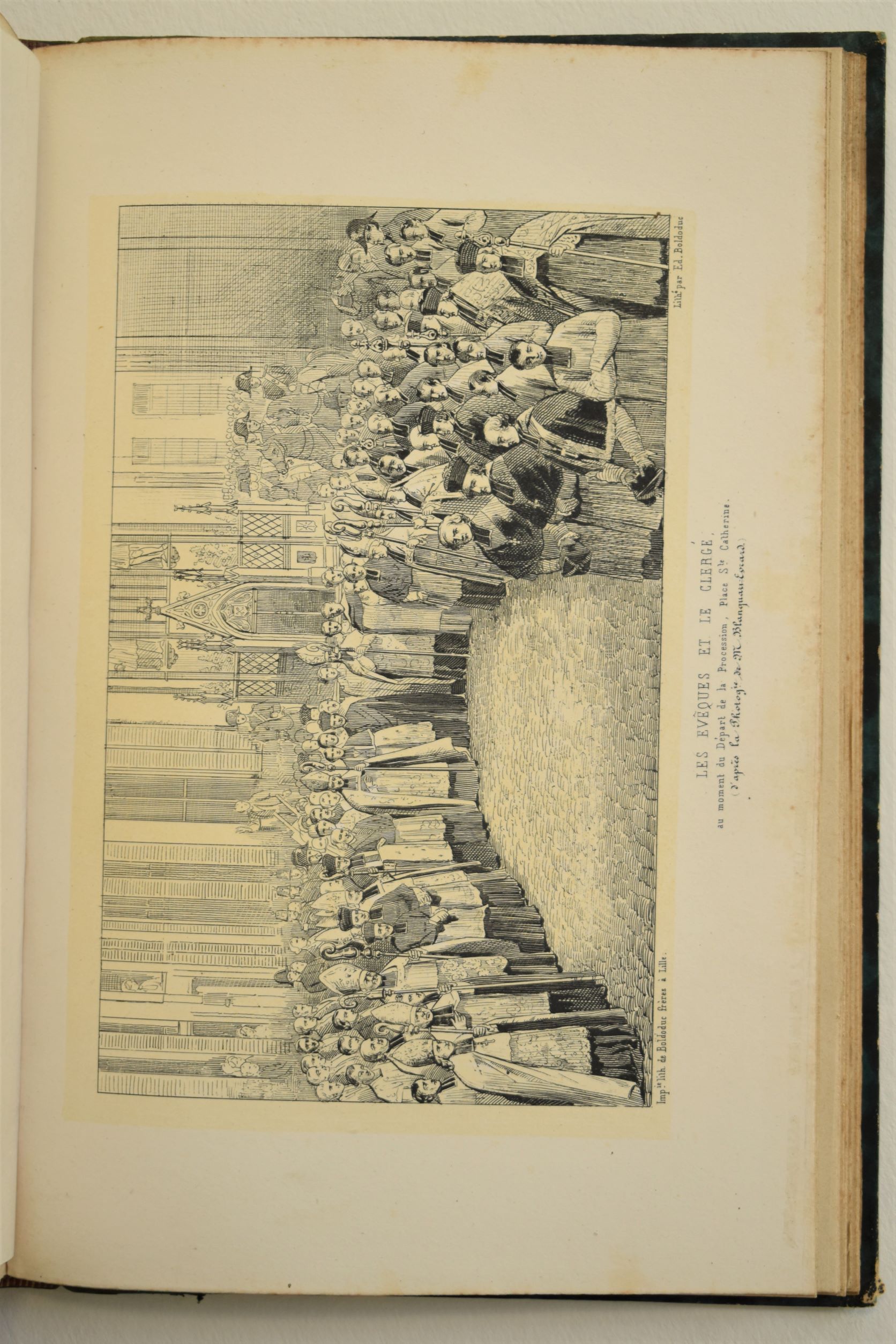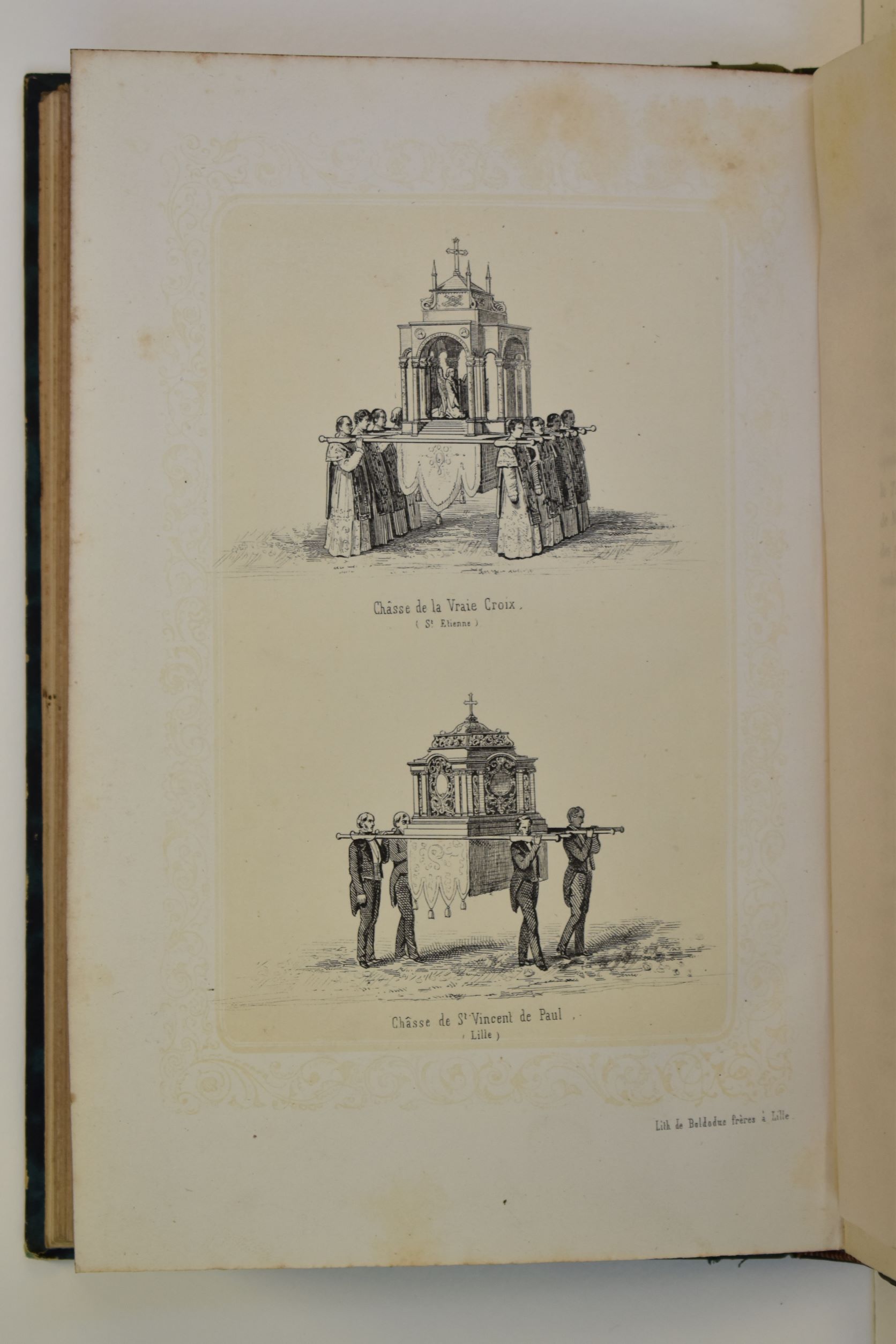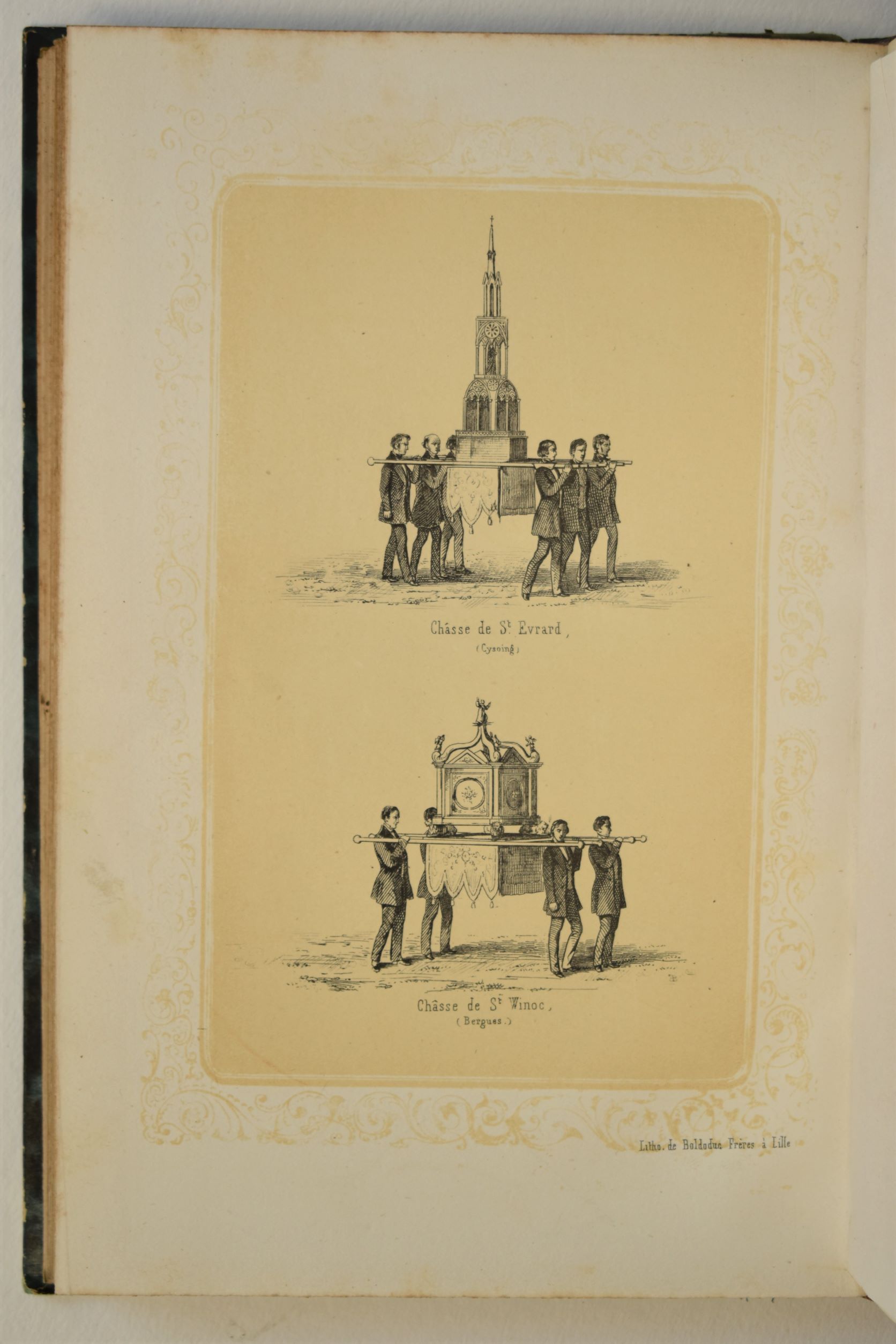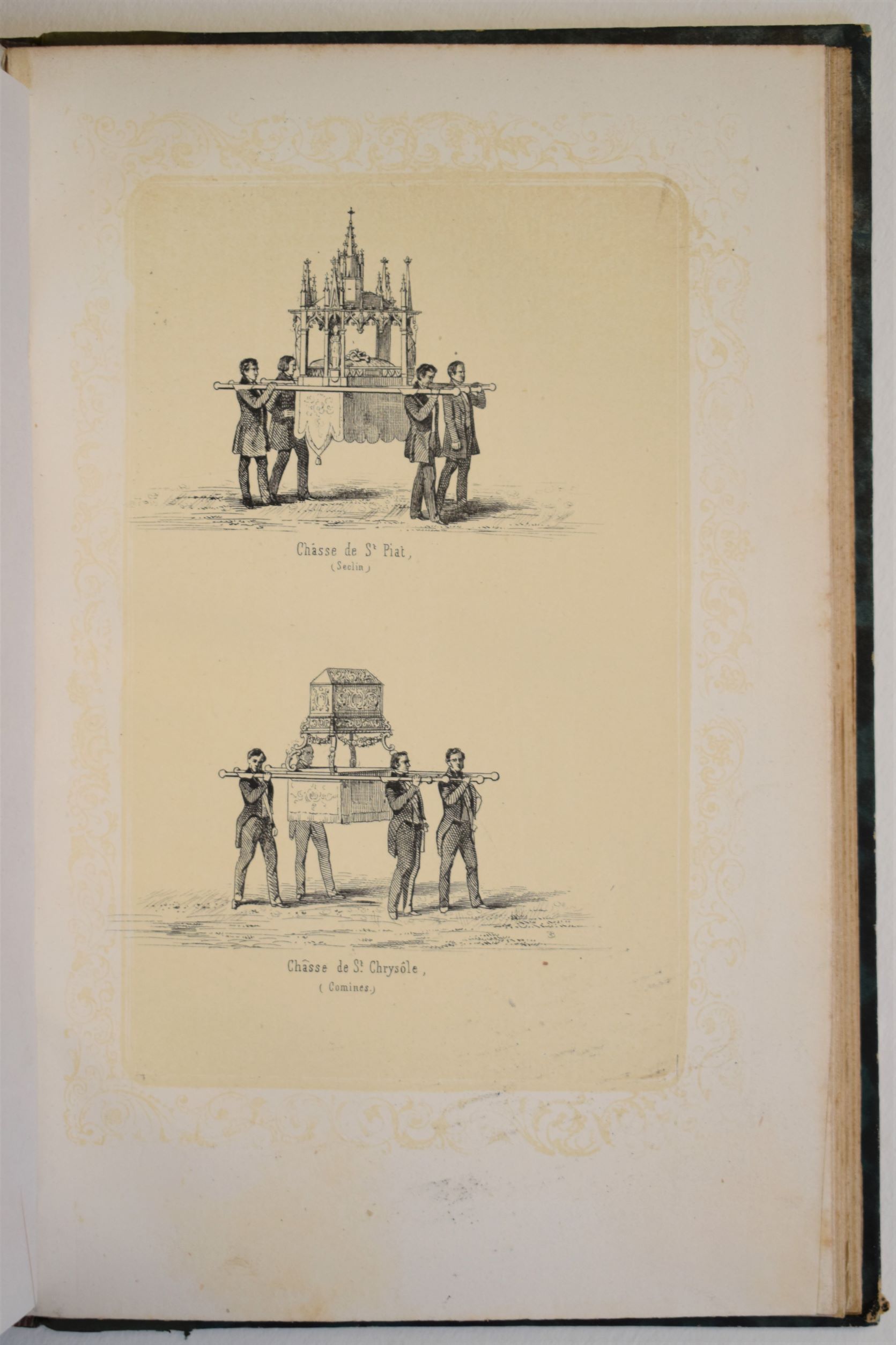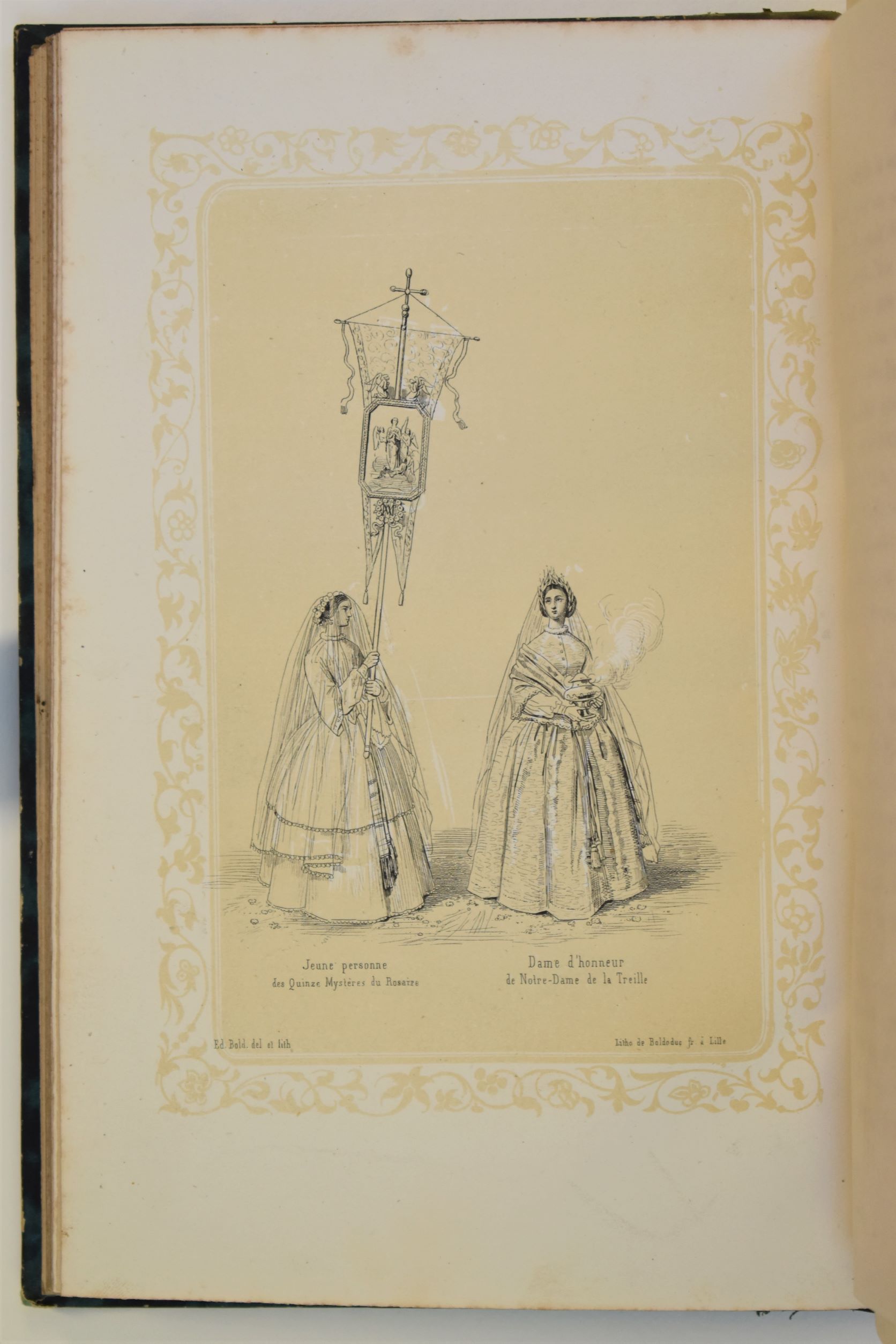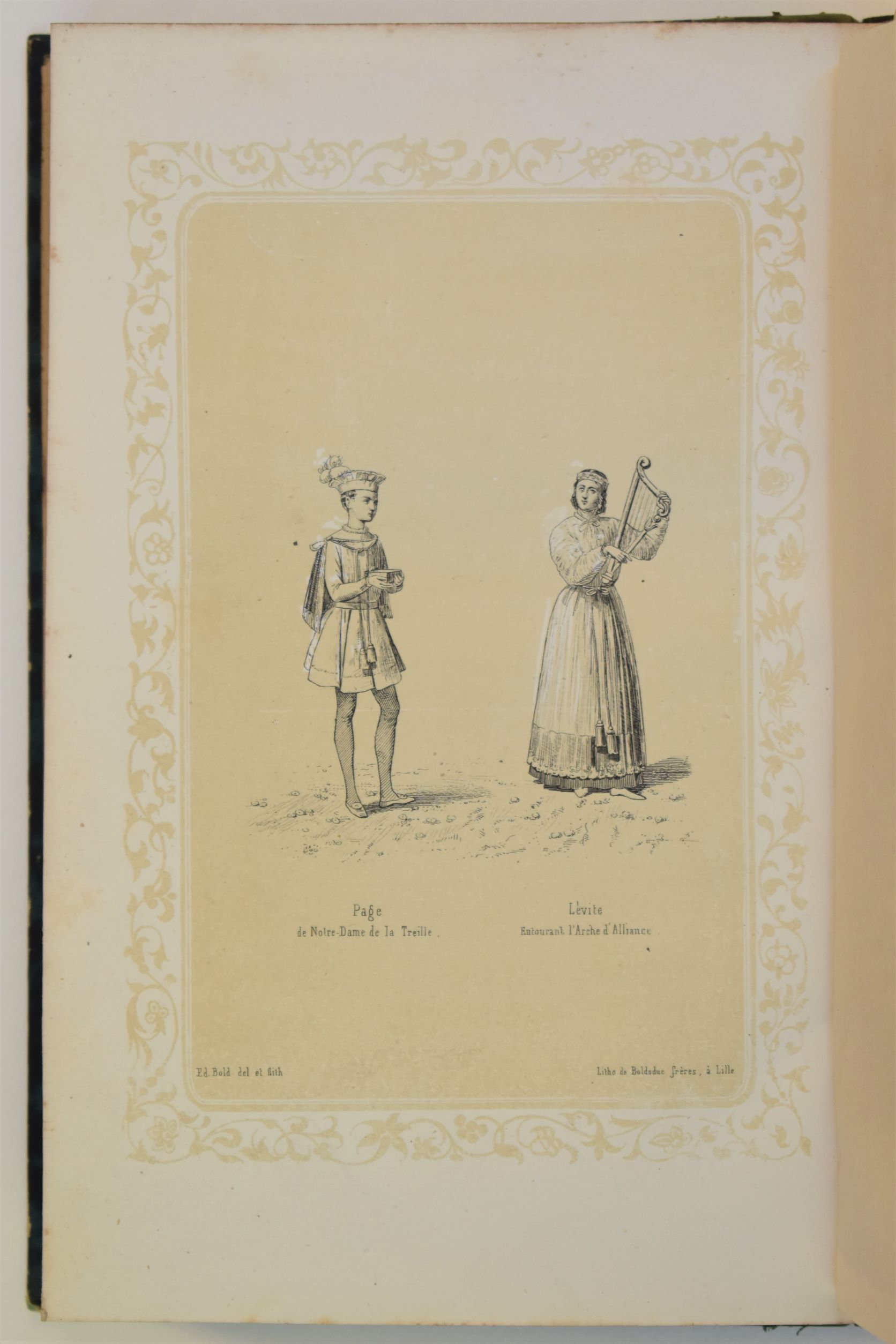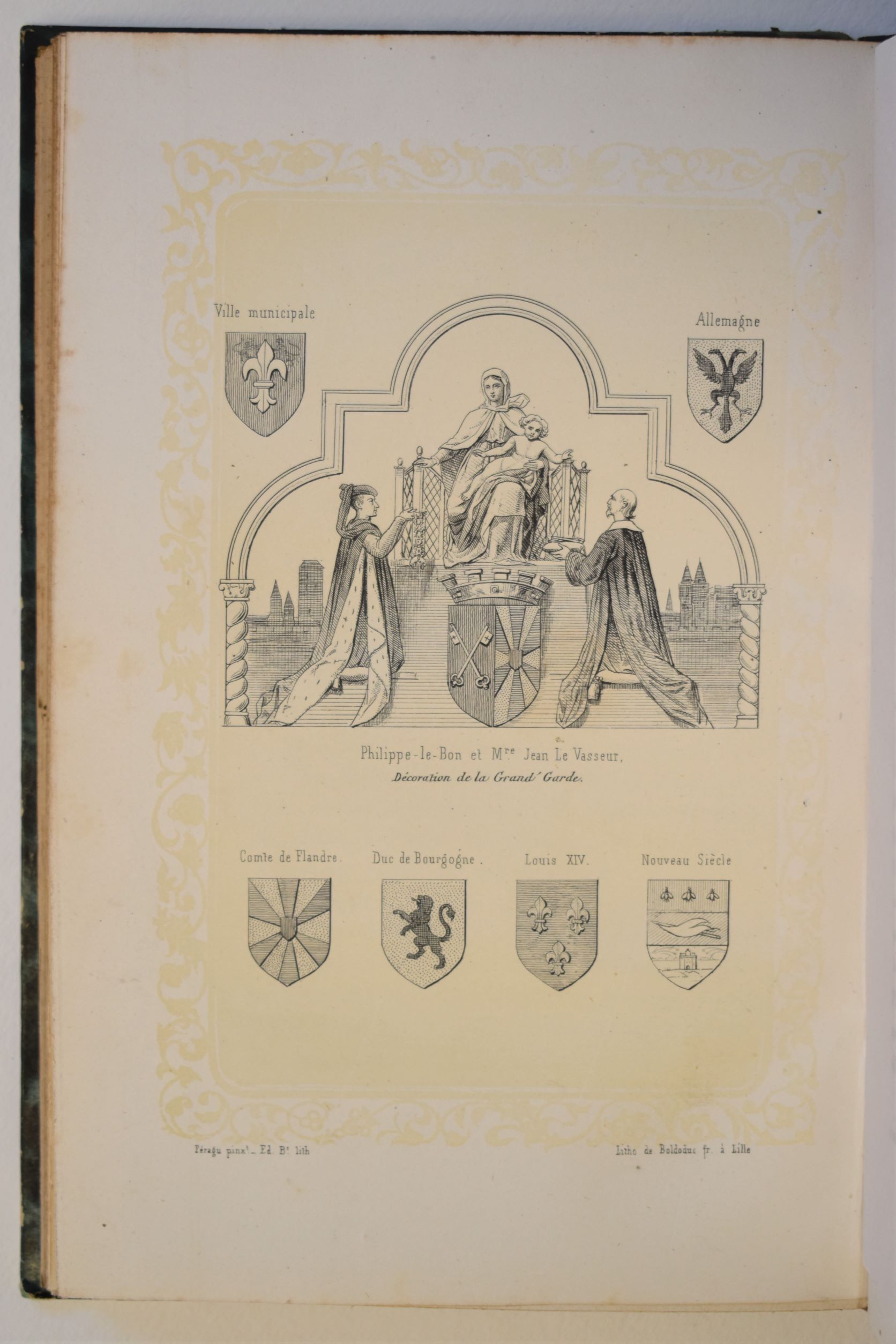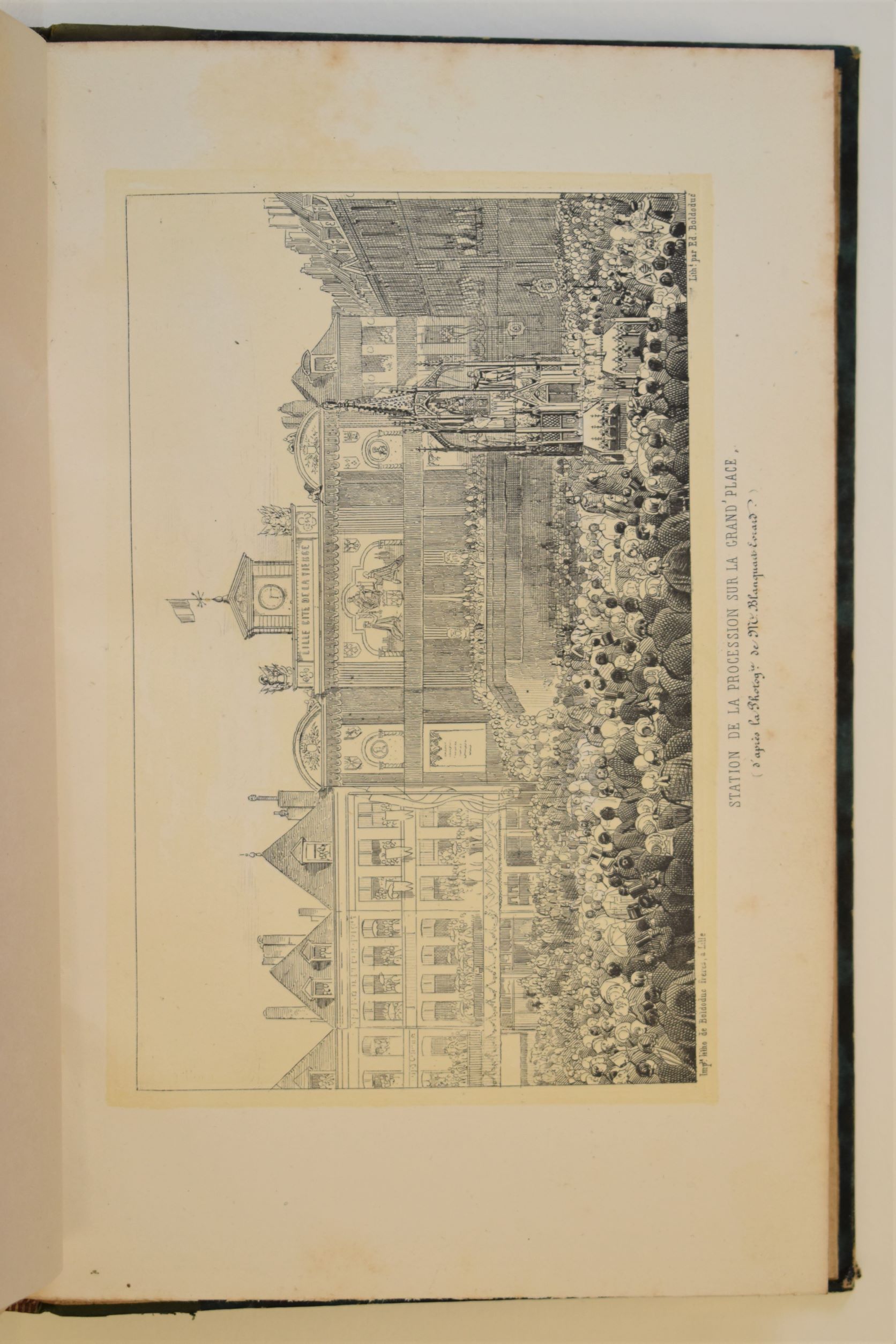Religious processions are festive celebrations during which music plays a big part. Several groups make up the procession and it is noticeable that each group has its own musical faction. Should we take the example of Tournai’s Great Procession, it originated in 1092 and commends itself to Our Lady of Flanders. It is noteworthy both in religious, historical and artistic terms: for its music and its rich floral decorations especially.
The following paper was published to celebrate the 800 anniversary of this procession, which still exists nowadays and highlights the pomp and ceremony of the historical part of the procession.
800th anniversary of the Tournai procession, 1092-1892: album of the historical and costumed part of the procession of August 7, 1892. HR12 0110
Just as we sing Mass songs, the chant dominates the processions and the religious figures, regardless if they can be traced back to sacred books or if they are important figures of the local religious history are honored through a series of chants during the procession. The local musical societies or other lines of work mingle with the religious body during these celebrations and take their part in leading the procession.
Coronation celebrations of Notre-Dame de la Treille. PEU.08.b0365
The coronation of the Notre-Dame-de-la-Treille statue and the secular jubilee of the same cathedral are 2 major events for the city of Lille. More than just simple religious processions, these occasions brought together the faithful for cultural festivities. According to the programme for the Celebrations of the Coronation of the Notre-Dame-de-la-Treille, which took place in 1874, a poetry and a music contest encouraged the intellectual creativity of the local worshippers. An exhibition for religious art was also organized with the aim of bringing into the limelight the rich and archeological heritage of the churches from the North of France.
These engravings celebrate the Notre-Dame-de-la-Treille’s Jubilee procession from 1854. They remind us of the pomp and ceremony of the procession and reflect its importance, the crowds gathering in the Main Square, lavishly decorated for the occasion.
Complete history of the festivals celebrated in Lille, in 1854, on the occasion of the secular jubilee of Notre-Dame de la Treille, patron saint of this city. 9B3/17
By the way, have you noticed it? This engraving by the Boldoduc brothers is derived from a photo by Blanquart-Evrard, a famous photographer and photography editor from Lille who took a series of 5 photos, two of which are now preserved at the Lille Public library.

© BM de Lille

© BM de Lille
The sound of tolling church bells or, whenever the town owns one, the belfry’s carillon, announce and mark the festivities. The carillon does not chime exclusively during processions; it is part of everyday life and chimes both on the hours and on the half hours. In the past, the bells were first and foremost functional. Over the years, the carillonneurs have started playing and reproducing well-known tunes using the bells. At the beginning of the 19th century, there was a tendency for the adaptation of vocal music, as well as that of songs in patois, which enriched this repertoire. Even today we can still hear some songs which are popular since the time of the carillons. The Carillon of Tourcoing holds concerts regularly thanks to the association “Les amis de Tourcoing et du Carillon” (The friends of Tourcoing and of the Carillon).
